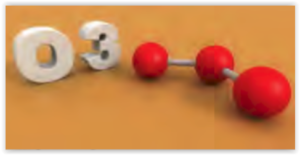No Zone for OZONE
WHY OZONE MIGHT BE MORE TROUBLE THAN IT’S WORTH
 The use of ozone (O3) is often touted as an “all-natural” way to rid an environment of unpleasant odors. Some claim that an ozone generator can successfully remove odors caused by everything from mold to cleaning products. The truth is, while ozone is technically natural, that doesn’t mean it’s safe.
The use of ozone (O3) is often touted as an “all-natural” way to rid an environment of unpleasant odors. Some claim that an ozone generator can successfully remove odors caused by everything from mold to cleaning products. The truth is, while ozone is technically natural, that doesn’t mean it’s safe.
Ozone is created by exposing oxygen (O2) atoms to electricity. The oxygen atoms break apart, creating the unstable compound we call ozone. Seeking to return to a more stable compound, one of the ozone atoms will bind to other compounds in the surrounding air. People who market and sell ozone will claim it eliminates chemical odors by bonding to the molecules and destroying them, but this isn’t really what happens.
If you think back to your high school chemistry class, you’ll remember matter cannot be destroyed, only changed. When the oxygen atom leaves ozone and binds to another chemical in the air, it creates a chemical reaction. The ozone isn’t destroying the molecules that cause the odors; it’s changing them into something different. Sometimes, the reaction does eliminate the odor, but other times it creates an even more harmful chemical. Take formaldehyde (CH2O), for example. If ozone is introduced to formaldehyde, the chemical reaction will create compounds that can be more dangerous than the original offending formaldehyde.
There is a time and a place for ozone, but it should always be used with great care and only in unoccupied environments. The EPA warns prolonged exposure to ozone can lead to respiratory problems, asthma symptoms, chest pain, throat irritation, irritated lung tissue, and a greater risk of lung disease. When utilizing ozone after cleaning air ducts, for example, it is imperative the ozone has enough time to fade from an environment before people are allowed in, with a recommended wait of at least six hours.
Experts agree ozone shouldn’t be used to cover odors every day. Your first step should be to identify the source of the bad smell and have the problem addressed by a professional. Keep these facts in mind before you try to rely on an ozone generator to freshen a building. If you do decide to use ozone, under no circumstances should you allow the generator to be turned on in an occupied environment. The risks are too great to justify putting people in danger because a room smells a bit musty.
